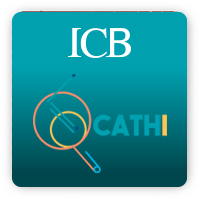A novel approach to trypsin inhibition by flavonoids
Trypsin is a key protease related to digestion and absorption of proteins, which its inhibition must be studied when natural compounds, such as flavonoids, are used as part of alternative treatments for obesity and diabetes mellitus type 2, since trypsin and other pancreatic enzymes work at small...
محفوظ في:
| المؤلف الرئيسي: | |
|---|---|
| مؤلفون آخرون: | , , , |
| التنسيق: | Artículo |
| اللغة: | English |
| منشور في: |
2021
|
| الموضوعات: | |
| الوصول للمادة أونلاين: | https://doi.org/ 10.31665/JFB.2021.14272 http://www.isnff-jfb.com/index.php/JFB/article/view/227/365 |
| الوسوم: |
إضافة وسم
لا توجد وسوم, كن أول من يضع وسما على هذه التسجيلة!
|
| الملخص: | Trypsin is a key protease related to digestion and absorption of proteins, which its inhibition must be studied
when natural compounds, such as flavonoids, are used as part of alternative treatments for obesity and diabetes
mellitus type 2, since trypsin and other pancreatic enzymes work at small intestine. Considering that flavonoids
are good lipase and amylase inhibitors, trypsin-flavonoids interactions were analyzed through UV-Vis, intrinsic
and extrinsic fluorescence spectroscopies, circular dichroism, and molecular docking. The interaction between
porcine pancreas trypsin and five flavonoids: hesperetin (HES), luteolin (LUT), quercetin (QUE), catechin (CAT),
and rutin (RUT) was evaluated. Most of them exhibited a mixed-type inhibition mode. LUT was the best trypsin
inhibitor (e.g., lower IC50, 45.20 ± 1.00 μM). All flavonoids-trypsin complexes showed static quenching, and QUE
and LUT exhibited higher affinity (associative binding constant, Ka values, 0.90 ± 0.10 and 1.60 ± 0.20·10−1 mM−1,
respectively). Hydrophobic interactions between trypsin and flavonoids were predominant. |
|---|
